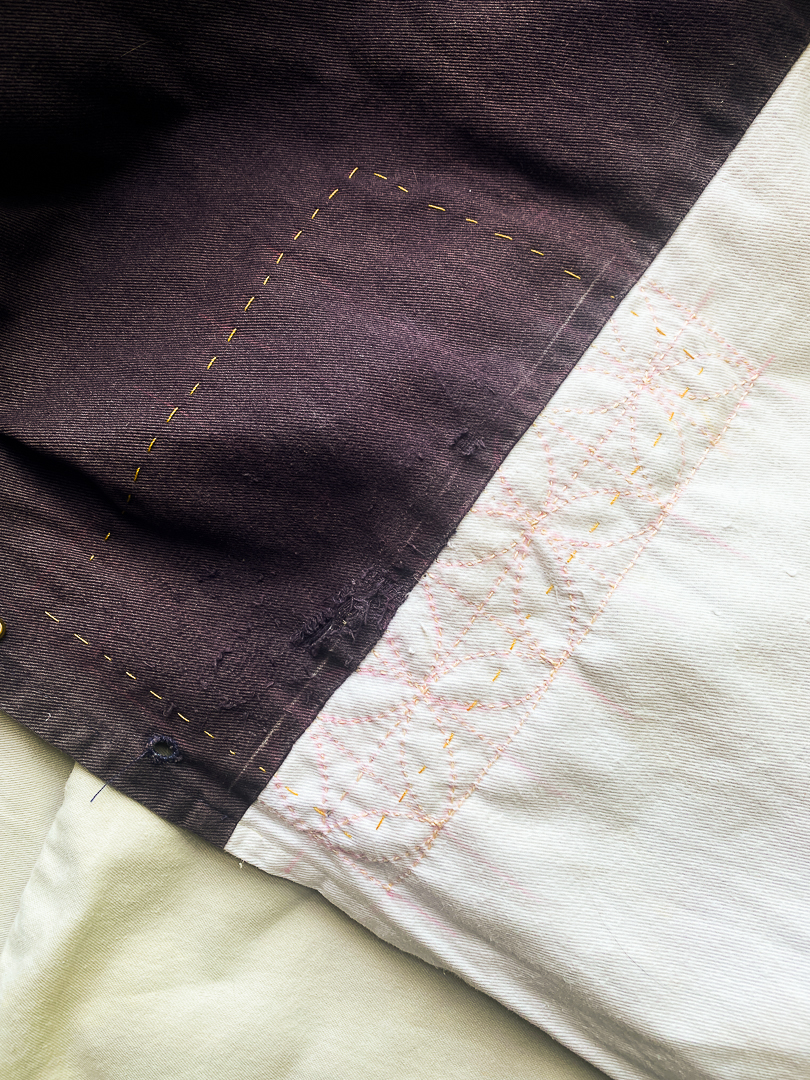Live Action Role-Playing (LARP) is an immersive experience where participants explore fantasy settings, assuming the roles of heroes, villains, and mythical beings.
At the heart of this experience lies the allure of custom costumes, which transport players into the rich tapestry of their chosen characters. Crafting and maintaining these intricate ensembles is essential for an enduring and cost-effective LARP journey!
Why Maintain Your Costume?
LARP costumes can represent a significant investment in both time and money. From designing the outfit to sourcing, commissioning, or making the individual items of costume, you don’t want that hard work to go to waste!
I believe that we also have a responsibility to the planet to try and extend the life of all of the things that we buy and make. Throwing away LARP costume that just needs a little repair is contributing to climate change needlessly.
So here are my top tips for caring for your larp costume, and we start right at the beginning!
1. Fabric Selection and Construction
Choosing the right fabrics can make a huge difference to the way that a costume lasts. Opt for durable materials that breathe well and can withstand the rigors of action-packed gameplay. Cotton, linen, ramie, rayon, and wool are all durable and hardwearing fabrics that not only wash well, but will look good after years of use. Silk can be a great choice too, although it’s more expensive and requires special attention when it’s being washed.
Also pay heed to stitching and seam quality. Strong, quality stitching ensures longevity, preventing costume malfunctions during intense LARP encounters.
Stick to natural fibres if you want a costume that lasts and is easy to repair. Synthetic fabrics, such as polyester, nylon, PVC, and acrylic, will often become damaged more easily. They are often harder to repair and can look out of place in a historic or fantasy LARP setting.
Synthetic fabrics also shed microplastics into our environment, which is not very environmentally friendly.
2. Regular Maintenance and Cleaning
Preservation starts with regular upkeep. Spot clean your costume after each use, addressing stains or spills promptly. Know the best way to wash each garment, employing appropriate cleaning methods such as handwashing, machine washing (if suitable), or dry cleaning.

Avoid harsh chemicals or bleach that might damage delicate fabrics or intricate embellishments. Gentle spot cleaning with a soft cloth or brush is the best approach for ornate elements like beads, sequins, or trims
And don’t forget your boots! Even if you don’t want to give them a full clean, you should use a stiff brush to remove the dried mud off your boots after each event
3. Storage Techniques
Proper storage is crucial for extending the life of your LARP costume. Store garments in a cool, dry place away from direct sunlight to prevent fading or discolouration. Utilise garment bags or breathable fabric covers to shield costumes from dust and potential damage while in storage.
For elaborate accessories or armour pieces, consider using padded containers or designated compartments in storage boxes to prevent dents or scratches.
4. Repair and Alterations
Regularly inspect your costume for signs of wear and tear. Address loose threads, small tears, or missing embellishments quickly to prevent further damage. Basic sewing skills can be handy for quick repairs, while professional assistance might be necessary for intricate or extensive damage.
Should your character evolve or change within the LARP narrative, consider alterations or additions to your costume to align with the character’s development.

5. Mindful Handling During Gameplay

During gameplay, mindfulness is key. While playing try to avoid accidental damage to your costume or accessories. Be aware of your surroundings to prevent snagging on branches, rough surfaces, or other participants’ props.
If engaging in combat or other physically demanding activities, consider protective measures for your costume. Padding or reinforcement in vulnerable areas can mitigate potential damage.
6. Collaboration and Sharing Knowledge
Engage with fellow LARPers to exchange tips and tricks for costume maintenance. Collaborate on crafting techniques, share experiences, and seek advice on preserving specific types of materials or elaborate costume components.
Online forums, social media groups, or local LARP communities often serve as valuable resources for insights into caring for custom LARP costumes.
Conclusion
For LARP, a well-crafted costume is more than just an outfit; it’s a way to immerse yourself in your character and the world. By investing time and effort in the maintenance of your custom LARP costume, you ensure not only its longevity but you also help to prevent climate change by sending less to landfill.

Leave a Reply